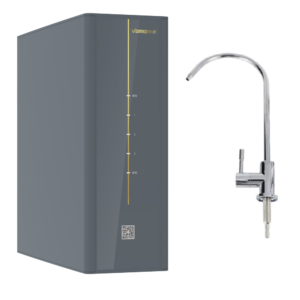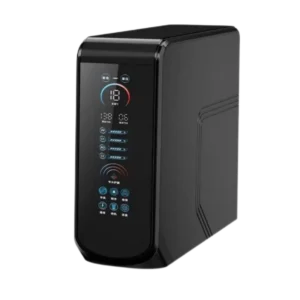The Differences Between Ultrafiltration, Reverse Osmosis, and Nanofiltration Water Purification Technologies
Ultrafiltration, reverse osmosis, and nanofiltration are three popular water purification technologies,
each with its own unique characteristics and capabilities.
each with its own unique characteristics and capabilities.
Ultrafiltration (UF) uses a semi-permeable membrane with pores that are larger than those in reverse
osmosis and nanofiltration membranes. The pore size typically ranges from 0.01 to 0.1 micrometers.
This allows UF to remove larger particles such as sediment, rust, bacteria, and some viruses. It works by

forcing water through the membrane under pressure. Larger contaminants are trapped on the surface of the membrane,
while the clean water passes through. UF is effective at removing pathogens that can cause waterborne diseases,
but it is not as efficient at removing dissolved salts, heavy metals in ionic form, and most dissolved organic compounds.
However, it can remove some larger organic molecules and colloids. One advantage of UF
is that it requires less energy compared to reverse osmosis, and it generally has a lower cost of operation and maintenance.
osmosis and nanofiltration membranes. The pore size typically ranges from 0.01 to 0.1 micrometers.
This allows UF to remove larger particles such as sediment, rust, bacteria, and some viruses. It works by

forcing water through the membrane under pressure. Larger contaminants are trapped on the surface of the membrane,
while the clean water passes through. UF is effective at removing pathogens that can cause waterborne diseases,
but it is not as efficient at removing dissolved salts, heavy metals in ionic form, and most dissolved organic compounds.
However, it can remove some larger organic molecules and colloids. One advantage of UF
is that it requires less energy compared to reverse osmosis, and it generally has a lower cost of operation and maintenance.
Reverse Osmosis (RO) is a more advanced and highly efficient purification method. It uses a semi-permeable membrane
with extremely small pores, usually around 0.0001 micrometers. This small pore size enables RO to remove a wide variety

of contaminants, including dissolved salts, heavy metals like lead, mercury, and arsenic, most bacteria and viruses, and many
organic compounds. RO works by applying pressure to the water on one side of the membrane, forcing the water molecules
with extremely small pores, usually around 0.0001 micrometers. This small pore size enables RO to remove a wide variety

of contaminants, including dissolved salts, heavy metals like lead, mercury, and arsenic, most bacteria and viruses, and many
organic compounds. RO works by applying pressure to the water on one side of the membrane, forcing the water molecules
through while leaving behind the contaminants. This process is highly effective at producing pure water, but it also has some
drawbacks. RO systems require a significant amount of energy to operate, and they produce a certain amount of wastewater
in the process. Additionally, since RO removes almost all minerals from the water, the resulting water may have a flat taste.
However, some RO systems can be equipped with remineralization filters to add back beneficial minerals.
Water Purifier Factory, Water Purifier For Home, Water Purifier Machine,Water Purifier, Water Filter Purifier SystemNanofiltration (NF) lies between
UF and RO in terms of pore size, with pores typically ranging from 0.001 to 0.01 micrometers.
in the process. Additionally, since RO removes almost all minerals from the water, the resulting water may have a flat taste.
However, some RO systems can be equipped with remineralization filters to add back beneficial minerals.
Water Purifier Factory, Water Purifier For Home, Water Purifier Machine,Water Purifier, Water Filter Purifier SystemNanofiltration (NF) lies between
UF and RO in terms of pore size, with pores typically ranging from 0.001 to 0.01 micrometers.
NF can remove a significant amount of dissolved salts, especially divalent ions such as calcium and magnesium, which
are responsible for water hardness. It can also remove some heavy metals and larger organic molecules. Nanofiltration is more selective than UF in terms
of the substances it can remove, but it is not as comprehensive as RO.
NF systems generally require less pressure and energy compared to RO,
and they produce less wastewater. However, they may not be as effective at removing very
small contaminants like some viruses and certain dissolved organic compounds.
are responsible for water hardness. It can also remove some heavy metals and larger organic molecules. Nanofiltration is more selective than UF in terms
of the substances it can remove, but it is not as comprehensive as RO.
NF systems generally require less pressure and energy compared to RO,
and they produce less wastewater. However, they may not be as effective at removing very
small contaminants like some viruses and certain dissolved organic compounds.
In summary, UF is suitable for removing larger particles and some pathogens, RO is the best for producing highly purified water by
removing a wide range of contaminants, and NF is useful for reducing water hardness and removing some specific contaminants.
The choice of which technology to use depends on the specific water quality issues you need to address
and your preferences regarding water purity, energy consumption, and cost.
The Differences Between Ultrafiltration, Reverse Osmosis, and Nanofiltration Water Purification Technologies

removing a wide range of contaminants, and NF is useful for reducing water hardness and removing some specific contaminants.
The choice of which technology to use depends on the specific water quality issues you need to address
and your preferences regarding water purity, energy consumption, and cost.
The Differences Between Ultrafiltration, Reverse Osmosis, and Nanofiltration Water Purification Technologies

